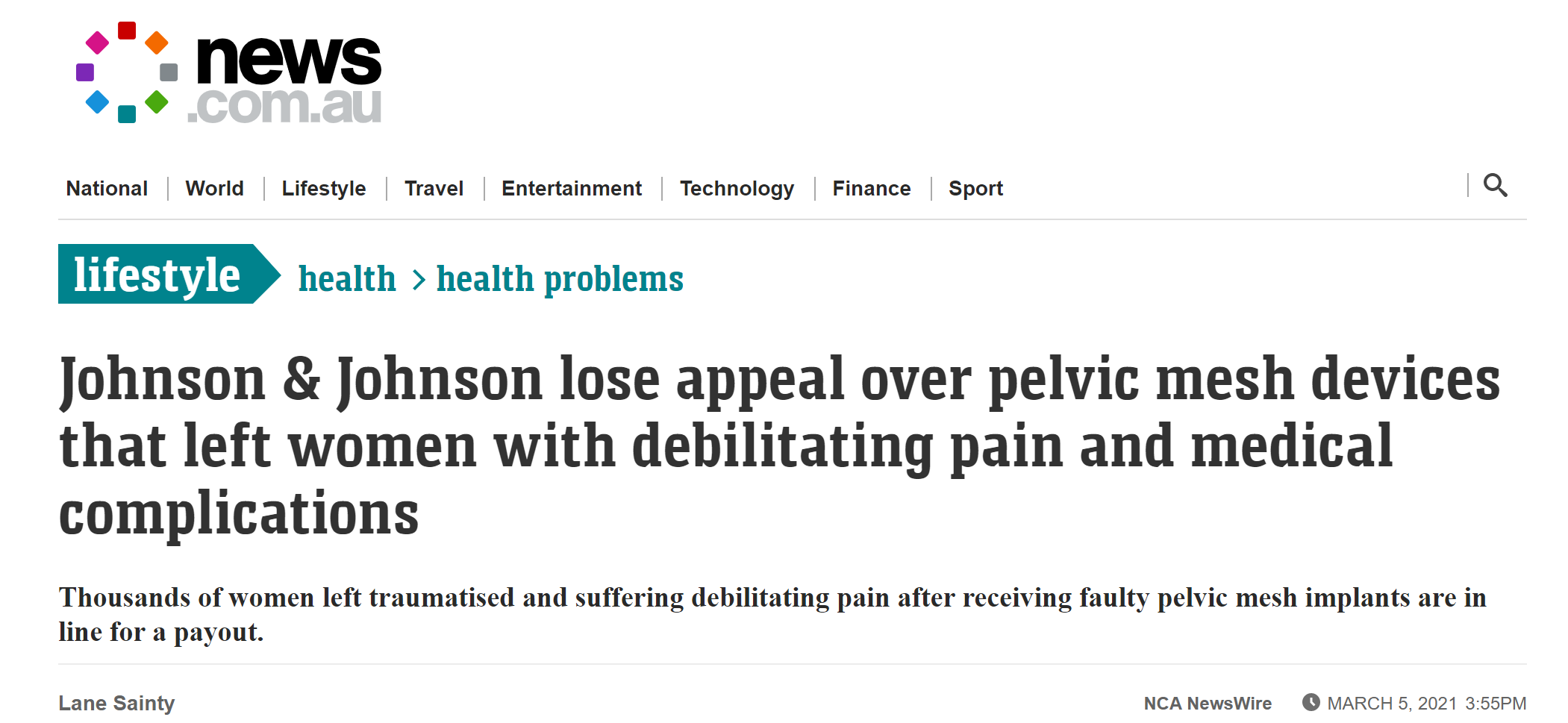In recent days Johnson and Johnson have lost their appeal in the high-profile class action in relation to the use of vaginal mesh for incontinence procedures. I have had the unfortunate experience of dealing with a number of patients who have experienced shocking complications and believe this Court result is entirely appropriate.
After training in France I was one of the first surgeons in Australia to successfully perform laparoscopic colposuspension for the treatment of urinary incontinence(1). We converted the procedure from the traditional large open incision with similar high quality results. The procedure was reasonably easy when performed through a large incision but was much more technically demanding through small incisions such that many surgeons found it difficult to complete. Around that time a number of what was thought to be innovative pioneers started to popularise a new procedure for the treatment of incontinence by placing a non-absorbable mesh designed to initiate fibrosis in the vagina supporting the bladder neck. The procedure was allegedly quick, easy and safe. I and a small number of others were appalled at what was essentially a blind operation placing a non-absorbable mesh in such a precarious position that was clearly going to have problems with erosion into the vagina, chronic infection and then extreme difficulty in removal. At the time the large medical device manufacturers had multiple meetings extorting the ease of use and tremendous results. Many colleagues with very little surgical experience started placing these devices on the basis of these claims. I remained exceedingly sceptical and have never placed one of these devices in the course of my career. The pressure to conform was intense and led me away from the performance of these procedures in patients with incontinence and prolapse.
Subsequent to these mesh cases increasing numbers of patients and doctors have asked my advice in negotiating the difficulties in management of incontinence and pelvic organ prolapse. It is clear that many of the old operations such as colposuspension are now increasingly of interest but many current surgeons will not be familiar with these techniques. There remains good evidence and support for the use of colposuspension for the treatment of stress urinary incontinence and I suspect many if not most patients will decline the use of any form of vaginal mesh for treatment. The Australian Commission on Safety and Quality in Health Care have produced an excellent leaflet outlining the role of colposuspension.
I have re-started doing these procedures and believe there will be an increasing role for them as patients understandably avoid the use of vaginal mesh. The world of mesh-free prolapse surgery is back.
(1) Cooper MJ, Cario G, Lam A, Carlton M. A review of results in a series of 113 laparoscopic colposuspensions. Australian & New Zealand Journal of Obstetrics & Gynaecology. 1996; 36(1): 44-8.
